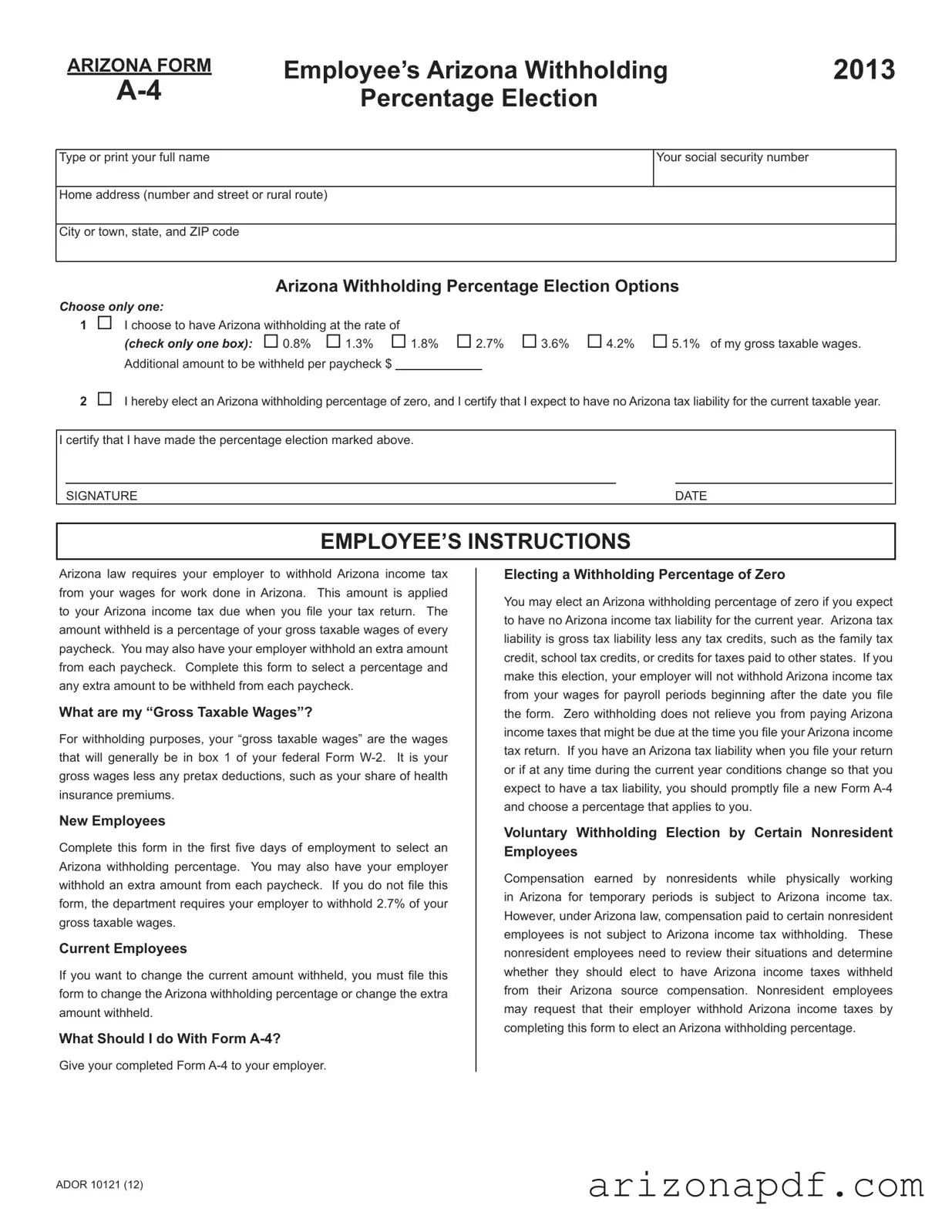The Arizona A-4 form, a pivotal document for defining income tax withholding preferences for employees in Arizona, shares similarities with a variety of other tax and employment-related documents across the United States. Each of these documents plays a unique role in the financial affairs of employees and employers, particularly in managing taxes and payroll deductions.
The W-4 Form, or Employee's Withholding Certificate, used at the federal level, is quite similar to the Arizona A-4 form. It allows employees to determine the amount of federal income tax to be withheld from their paychecks. Like the A-4, employees fill out the W-4 to adjust their tax withholdings based on personal and financial situations, ensuring the right amount of federal tax is withheld to meet their tax liability.
The California DE 4 Form serves a similar purpose for the residents of California, allowing employees to specify their state income tax withholding preferences. Just like the A-4 form, the DE 4 is used by employees to indicate to employers how much state tax to withhold from their paychecks, based on their estimated annual tax liability, exemptions, and credits.
New York's IT-2104 form is another state-specific equivalent, enabling employees within New York to tailor their state tax withholdings. Comparable to Arizona's A-4 form, the IT-2104 allows for adjustments based on personal allowances and additional amounts to be withheld, ensuring employees can manage their state tax liabilities effectively throughout the year.
In Texas, which does not collect state income tax, there is no direct equivalent to the A-4 form, showcasing the variability in state tax laws across the United States. However, residents may still encounter similar documentation for other purposes, such as the Texas Franchise Tax form for businesses, highlighting the diversity in tax-related documentation needs based on geographical and occupational differences.
For individuals working in multiple states or moving between states, the Certificate of Non-Residence or Allocation of Withholding Tax (often seen with different names and form numbers across states) serves a similar purpose. It allows them to claim exemptions or adjustments in withholding based on the states' reciprocity agreements or their residency status, reminiscent of the nonresident considerations in the Arizona A-4 form.
On a more specialized note, the W-4P Form is utilized by recipients of pensions, annuities, and certain other deferred compensation plans to determine the amount of federal income tax withholding. Similar to the A-4 form's function for wage earners, the W-4P enables retirees and others to adjust their tax withholdings according to their expected tax liability.
The W-4V, or Voluntary Withholding Request, allows Social Security and other federal benefit recipients to request withholding for federal taxes, an option that mirrors the elective nature of withholding adjustments found in the A-4 form. It provides a means for individuals receiving government payments to manage their tax responsibilities proactively.
Lastly, the 1099-MISC and 1099-NEC forms, while primarily for reporting purposes, indirectly relate to the topic of withholding, as they may trigger the need for individuals to adjust their withholding amounts on wage earnings forms like the A-4, if they have additional income not subject to withholding.
Each of these documents, while catering to different facets of tax and employment law, collectively ensure that individuals can navigate their tax obligations with a degree of personalization and foresight, echoing the objectives of Arizona's A-4 form.

